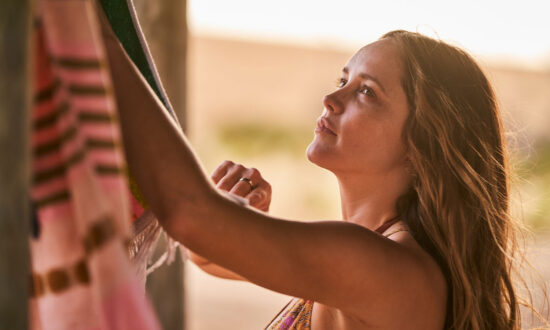When the final 12 episodes of Grace and Frankie were released two weeks ago, the show became the longest-running television series on Netflix.
Over 94 episodes, this unlikely hit went where no other series had taken viewers: into the lives of older women forced to restart their lives, both socially and sexually, after their marriages of 40 years had ended.
Their husbands’ revelation that they had been lovers for 20 years – and now planned to marry each other – threw the central characters fractiously together in an admittedly idyllic San Diego beach house.
The show broke new ground when it launched in 2015, not only for its frank and fearless portrayal of ageing, but because its central characters were ageing women.
Older women are one of the least visible demographics on television, and to see them front and centre is still unusual.
The Golden Girls (1985-92) is the only real precedent for Grace and Frankie, although the ages of its characters are surprising in retrospect. In the first season of The Golden Girls, Rose is 55, Dorothy is 53, Blanche is 47 and Sophia is 79. In the reboot of Sex and the City, And Just Like That…, Miranda and Charlotte are 54, while Carrie is 55 – and they are certainly not portrayed as old.
But at the start of this series, Grace (Jane Fonda), Frankie (Lily Tomlin) and their former partners Robert (Martin Sheen) and Sol (Sam Waterson) are in their 70s.
The trouble with ageing
The show covers many of the issues of ageing from the perspective of the aged. These include a broad range of health problems – arthritis, immobility, a knee reconstruction and mini-strokes – as well as negotiating the competing claims of children, grandchildren, lovers and friends.
In season four, following multiple health issues and falling victim to a major scam, Grace and Frankie are tricked by their children into moving into aged care.
When they find that they are not allowed to run a business there – among other lost freedoms – they launch an escape bid, stealing a golf cart and heading back to the beach house which has been sold from under them.
The issue of children making choices for their ageing parents against their will is fraught. Older parents often require assistance from their children but at the same time don’t want to lose their autonomy. Children can jump in to resolve issues without taking their parents’ agency into account.
Here, this tension is mostly a source of humour at the expense of the aged-care home. But Grace and Frankie also gives a glimpse into how vulnerable people can become when they have health issues.
Let’s talk about sex
One of the most striking elements of the show is its forthright approach to sex. Part of this is the frank acknowledgement that with age comes certain sexual challenges.
Typically, popular culture has run from the idea that older women could be sexual, especially as they do not conform to dominant ideas of beauty.
The issue of what is often obliquely referred to as “feminine dryness” is tackled directly when Frankie concocts a lube from yams.
Together, both Grace and Frankie also develop a vibrator that not only takes account of arthritic hands but also of limited mobility. Though it provides the opportunity for numerous missteps, their company “Vybrant” is ultimately a success, with women of all ages giving the product rapturous endorsement.
Giving women the power to take control of their own sexual needs is something the show is emphatic about.
Finding joy
Bringing the challenges of coming out in your 70s for Robert and Sol into mainstream programming is also ground-breaking. Older gay men are another group who rarely see themselves on television.
Aspects of gay life – equal marriage, polyamory, promiscuity and leather men, together with gay musical theatre and obsessive dog ownership – are all depicted as part of the new world Robert and Sol enter into.
Coming out, and living the lives they have longed for, has its ongoing challenges for both characters. It is this willingness to look at every issue with both honesty and humour that has marked the approach by directors and writers Marta Kauffman and Howard J Morris and made the show such a success.

Get InReview in your inbox – free each Saturday. Local arts and culture – covered.
Thanks for signing up to the InReview newsletter.
The key focus of Grace and Frankie, despite its many diversions into the lives of ex-husbands, new lovers, friends and children, is always the friendship of Grace and Frankie.
Their friendship is hard won, severely tested, and often seems completely over – but it is the central love of both women’s lives, enabling them to go into old age with confidence, support and times of joy.
The full series of Grace and Frankie, including the final season, is available now on Netflix.
Mandy Treagus is Associate Professor in the Department of English, Creative Writing and Film at the University of Adelaide. This article is republished from The Conversation under a Creative Commons licence. Read the original article.
![]()
Support local arts journalism
Your support will help us continue the important work of InReview in publishing free professional journalism that celebrates, interrogates and amplifies arts and culture in South Australia.
Donate Here




